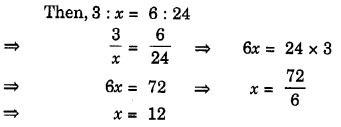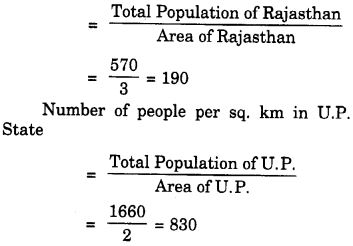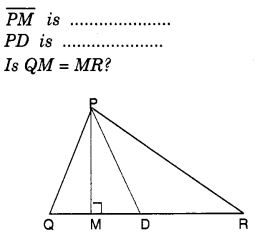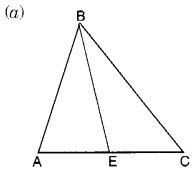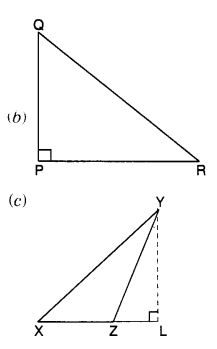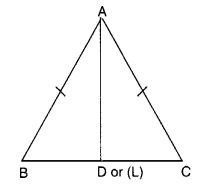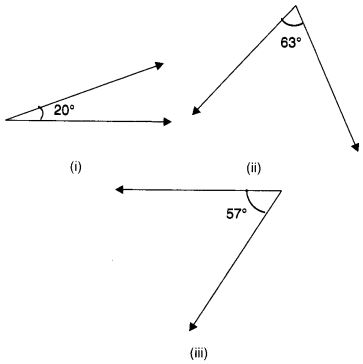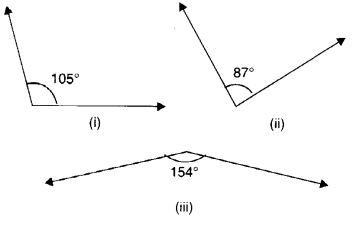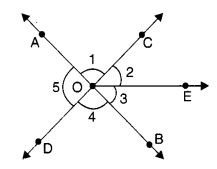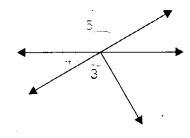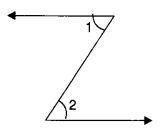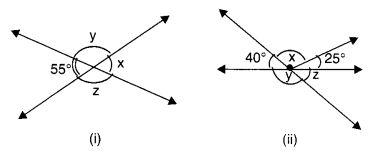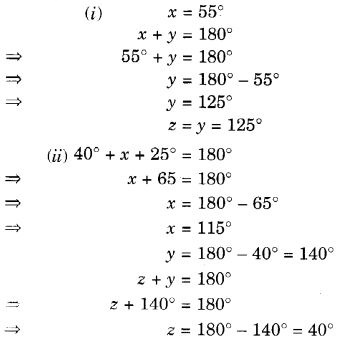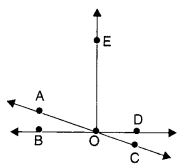NCERT Solutions for Class 7 Maths Chapter 9 Rational Numbers Ex 9.1 are part of NCERT Solutions for Class 7 Maths. Here we have given NCERT Solutions for Class 7 Maths Chapter 9 Rational Numbers Ex 9.1.
| Board | CBSE |
| Textbook | NCERT |
| Class | Class 7 |
| Subject | Maths |
| Chapter | Chapter 9 |
| Chapter Name | Rational Numbers |
| Exercise | Ex 9.1 |
| Number of Questions Solved | 10 |
| Category | NCERT Solutions |
NCERT Solutions for Class 7 Maths Chapter 9 Rational Numbers Ex 9.1
Question 1.
List five rational numbers between
- -1 and 0
- -2 and -1
- –\(\frac { 4 }{ 5 } \) and – \(\frac { 2 }{ 3 } \)
- –\(\frac { 1 }{ 2 } \) and \(\frac { 2 }{ 3 } \)
Solution:
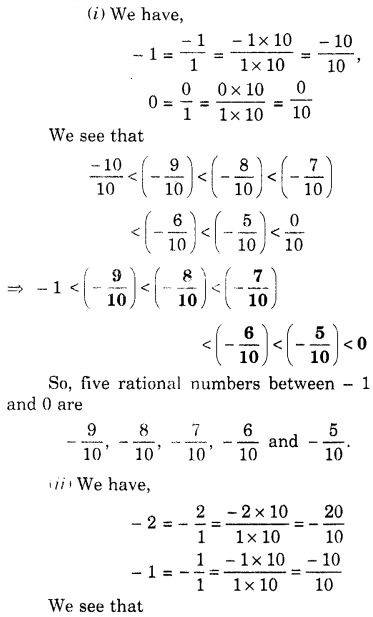
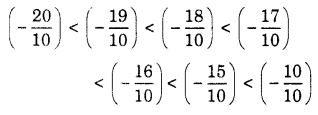
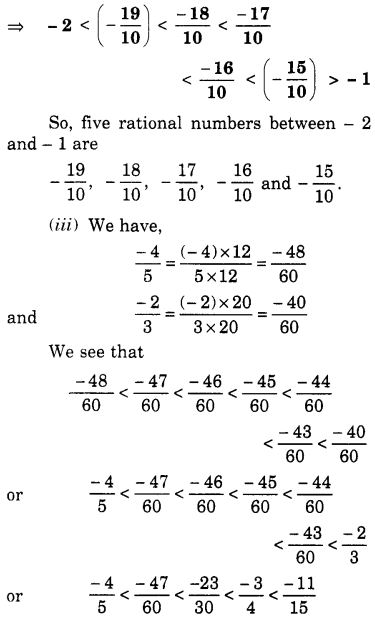
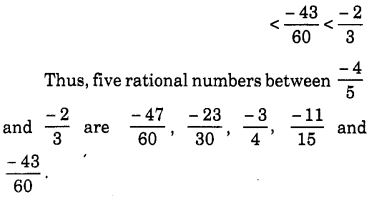
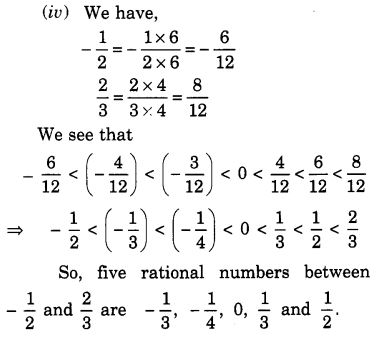
Question 2.
Write four more rational numbers in each of the following patterns :
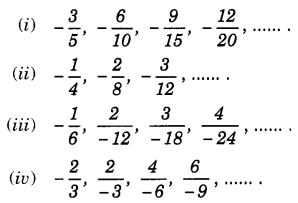
Solution:
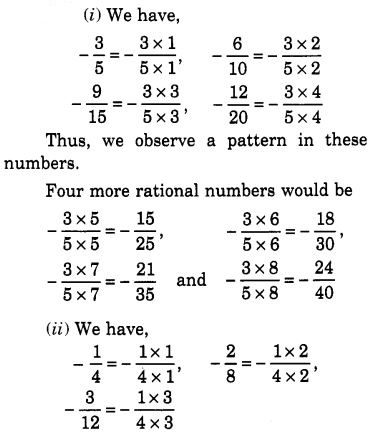
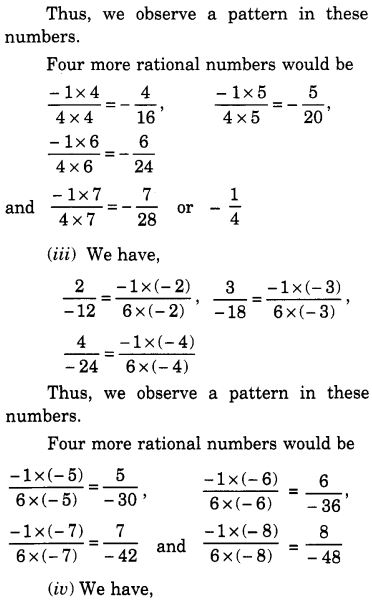
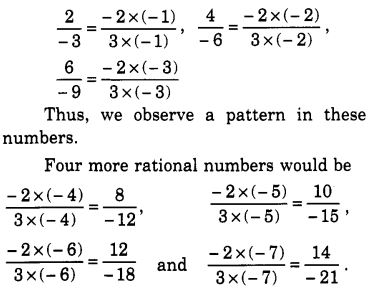
Question 3.
Give four rational numbers equivalent to:
(i) \(\frac { -2 }{ 7 } \)
(ii) \(\frac { 5 }{ -3 } \)
(iii) \(\frac { 4 }{ 9 } \)
Solution:
(i) Four rational numbers equivalent to \(\frac { -2 }{ 7 } \) are
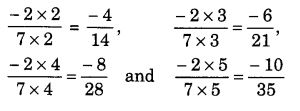
(ii) Four rational numbers equivalent to \(\frac { 5 }{ -3 } \) are


(iii) Four rational numbers equivalent to \(\frac { 4 }{ 9 } \) are
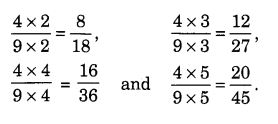
Question 4.
Draw the number line and represent the following rational numbers on it:
- \(\frac { 3 }{ 4 } \)
- \(\frac { -5 }{ 8 } \)
- \(\frac { -7 }{ 4 } \)
- \(\frac { 7 }{ 8 } \)
Solution:
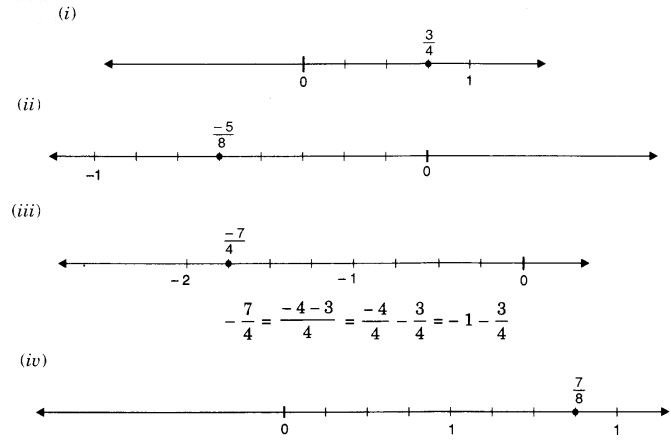
Question 5.
The points P, Q, R, S, T, U, A, and B on this number line are such that, TR = RS = SU and AP = PQ = QB. Name the rational numbers represented by P, Q, R, and S.

Solution:
The rational number represented by P is 2 \(\frac { 1 }{ 3 } \) = \(\frac { 7 }{ 3 } \)
The rational number represented by Q is 2 \(\frac { 2 }{ 3 } \) = \(\frac { 8 }{ 3 } \)
The rational number represented by R is -1 \(\frac { 1 }{ 3 } \) = \(\frac { -4 }{ 3 } \)
The rational number represented by S is -1 \(\frac { 2 }{ 3 } \) = \(\frac { -5 }{ 3 } \)
The rational numbers represented by P, Q, R and S are 2 \(\frac { 1 }{ 3 } \), 2 \(\frac { 2 }{ 3 } \), -1 \(\frac { 1 }{ 3 } \) and – 1 \(\frac { 2 }{ 3 } \) respectively
Question 6.
Which of the following pairs represent the same rational number?
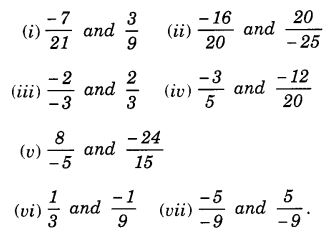
Solution:
(i) \(\frac { -7 }{ 21 } \) is a negative rational number and \(\frac { 3 }{ 9 } \) is a positive rational number. So, the given pair does not represent the same rational number.
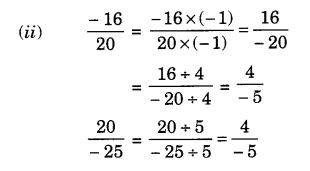
So, the given pair represents the same rational number.
![]()
So, the given pair represents the same rational number.
![]()
So, the given pair represents the same rational number.

So, the given pair represents the same rational number.
(vi) \(\frac { 1 }{ 3 } \) is a positive rational number and \(\frac { -1 }{ 9 } \) is a negative rational number. So, the given pair does not present the same rational number.

Thus, \(\frac { -5 }{ -9 } \) is a positive rational number and \(\frac { 5 }{ -9 } \) is a negative rational number. So, the given pair does not represent the same rational number.
Question 7.
Rewrite the following rational numbers in the simplest form :
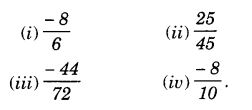
Solution:
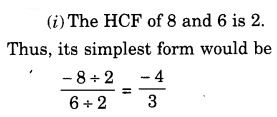
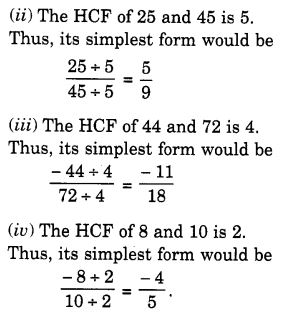
Question 8.
Fill in the boxes with the correct symbol out of >, < and =
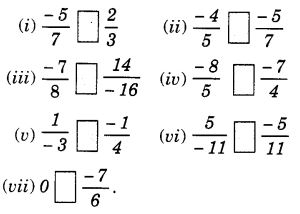
Solution:
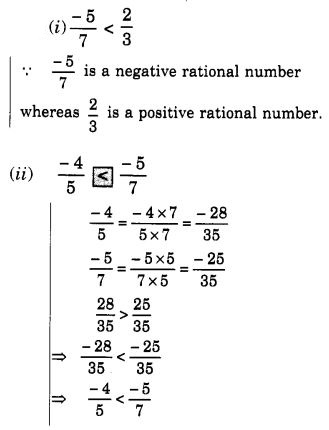
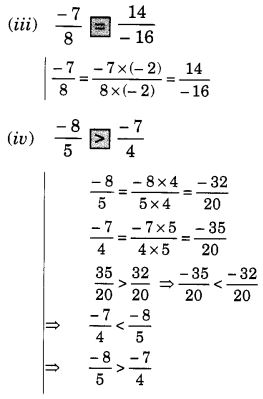
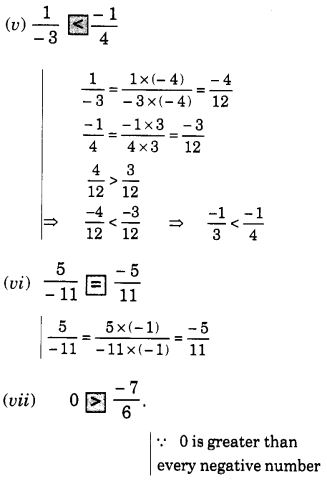
Question 9.
Which is greater in each of the following?

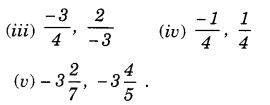
Solution:
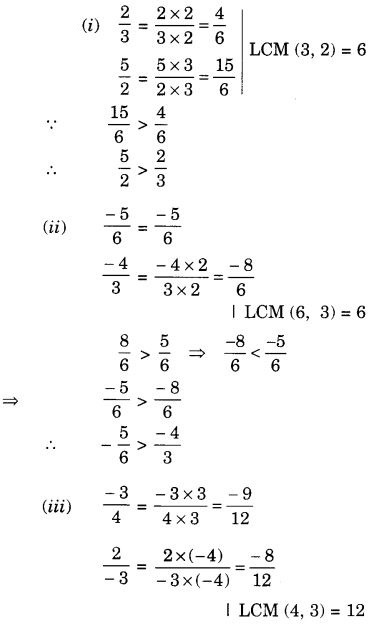
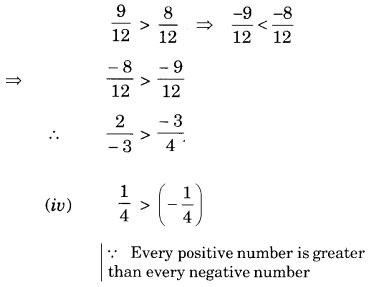
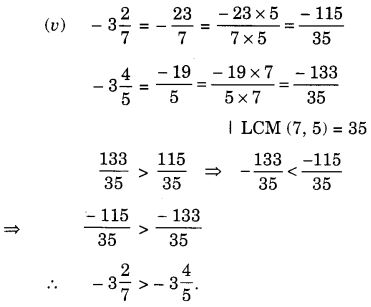
Question 10.
Write the following rational numbers in ascending order :

Solution:
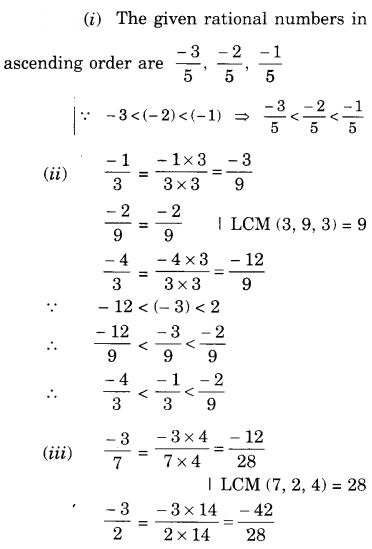

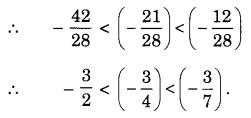
We hope the NCERT Solutions for Class 7 Maths Chapter 9 Rational Numbers Ex 9.1 help you. If you have any query regarding NCERT Solutions for Class 7 Maths Chapter 9 Rational Numbers Ex 9.1, drop a comment below and we will get back to you at the earliest.
